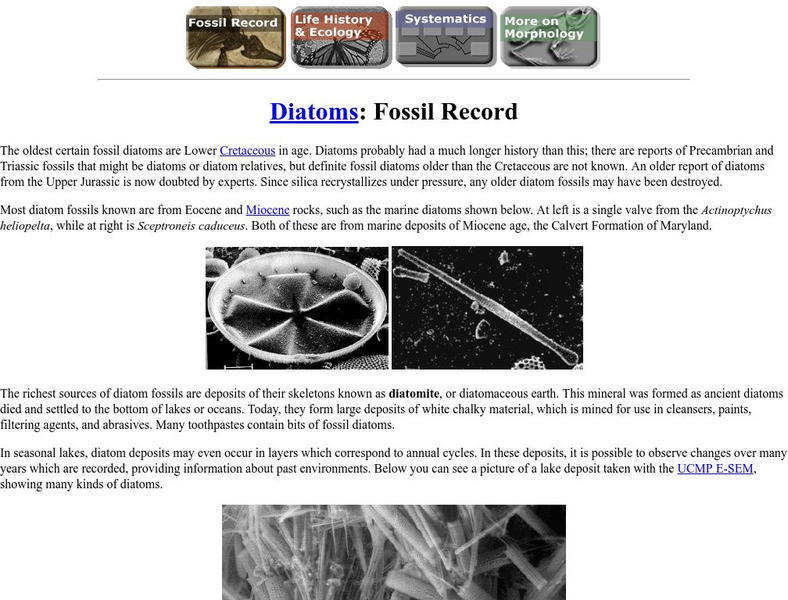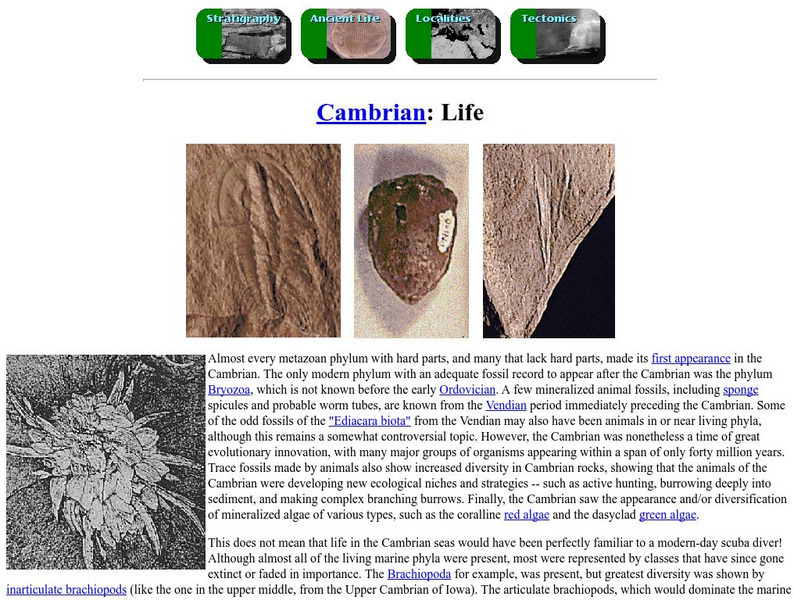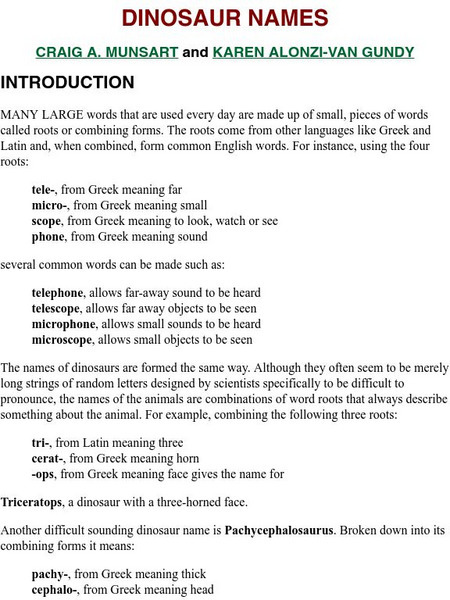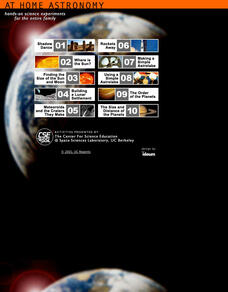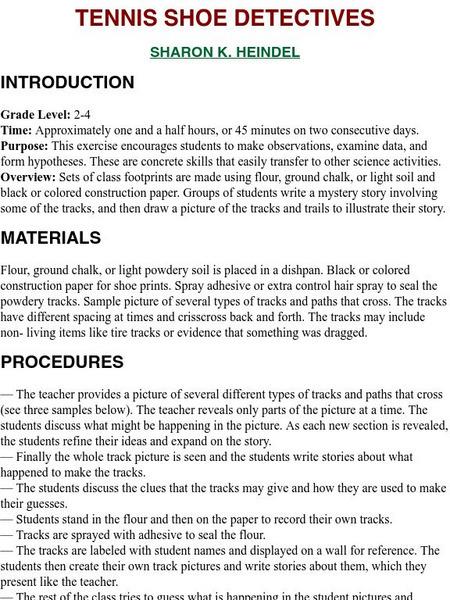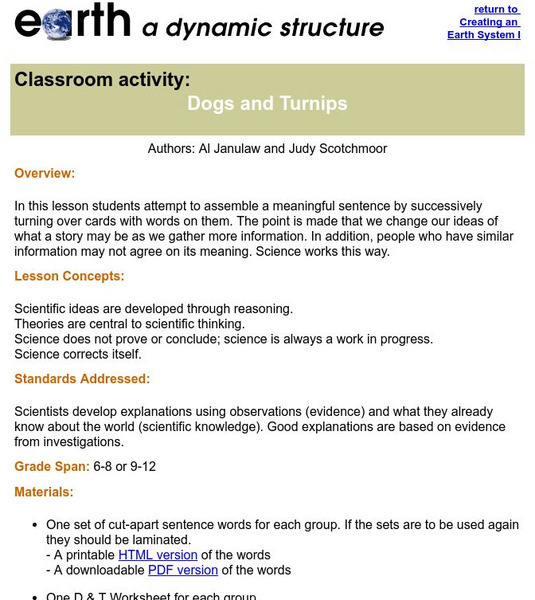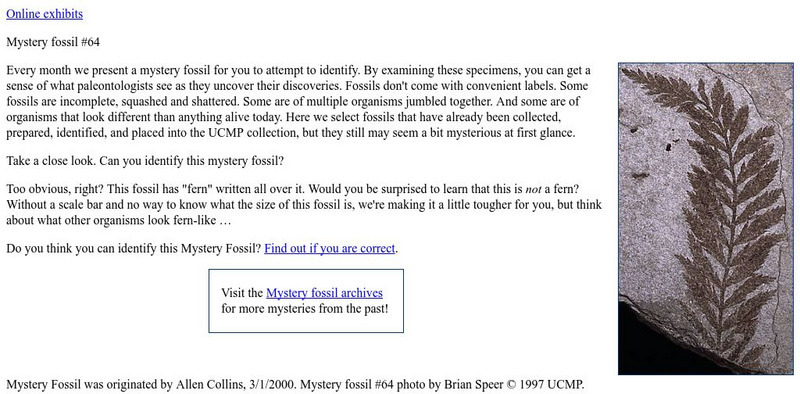University of California
Ucmp: Introduction to the Rhodophyta
Describes habitats of red algae. Also has pictures of various genus of red algae, with descriptions.
University of California
Ucmp: Introduction to Slime Molds
This University of California Berkeley site offers a definition of slime molds, structure, and life cycle.
University of California
Ucmp: Diatoms
Fossil records of diatoms. History, ecology, systematics, and morphology.
University of California
Ucmp: Life During the Cambrian Period
Information about the life forms that were around during the Cambrian Period. Includes pictures of fossils and links to each life form type.
University of California
Ucmp: The Triassic Period, 245 to 208 Million Years Ago
A brief overview of the Triassic Period, along with links to more detailed information on its subdivisions and life forms. Also includes information about subdivisions of the Period, along with Stratigraphy, Localities, and Tectonics.
University of California
Ucmp: Introduction to Artiodactyla
This site explores the artiodactyla, and includes a focus on fossil records, life history and ecology, systematics, and morphology.
University of California
Ucmp: Learning From the Fossil Record
Fossils provide scientists with clues about Earth's past. This site from the University of California's Museum of Paleontology is great for exploring lots of information on fossils.
University of California
Ucmp: Photosynthetic Pigments
The University of California provides an overview of photosynthetic pigments includes definition, importance in photosynthesis, and description of 3 basic classes of pigments.
University of California
The Faces of Science: African Americans in the Sciences Dr. Daniel Hale Williams
This "Faces of Science" resource offers summary information on the work of Dr. Daniel Hale Williams, along with an extensive bibliography of hardcopy text and picture sources for more information on his life and contributions.
University of California
Ucmp: Name a Dinosaur Activity
This article shows how scientists put together the scientific names of dinosaurs using Greek and Latin roots.
University of California
The Lessons of 1832
The London cholera epidemic of 1832 and its aftermath are discussed.
University of California
Ucmp: The Case of the Irish Elk
This site provides a general overview of the extinct deer species, the Irish Elk.
University of California
University of California: Lloyd Augustus Hall: Chemist and Inventor
Brief summary of Hall's inventions and contributions to science.
University of California
At Home Astronomy: Hands on Science Experiments for the Entire Family
A collection of ten hands-on science experiments for the entire family that will help you understand concepts in astronomy. Make an astrolabe, find the size of the sun and moon, build a lunar settlement, find out about meteoroids, shadow...
University of California
University of California: Bampfa: Yosemite Winter Scene by Albert Bierstadt
Learn about different qualities of landscapes, such as degree of realism versus exaggeration, from this activity that pushes viewers to think about different aspects of Bierstadt's seasonal landscape titled Yosemite Winter Scene.
University of California
University of California: Bampfa: Portrait of Alexander Dix by Sarah Perkins
Learn about the significance of children's portraiture in early America by studying a portrait of young Alexander Dix painted in 1795. The portrait is also a useful resource for learning about how portrait settings can be used to express...
University of California
Ucmp: Paleoecology
This engaging presentation gives examples of insights gained throught the science of paleoecology. Examples are provided that show how paleoecologists use fossils to determine past climates, ecosystem changes and interactions between...
University of California
Transportation Futuristics
It's fun to take a look at what we were supposed to be traveling in by now: flying cars, amphibious recreational vehicles, or a flying saucer bus! Take a look at designs that were before their time or never should have a time.
University of California
Ucmp: Dino Facts a Unit on Dinosaur Behavior
For this unit, learners look at what is known about three dinosaurs - Maiasaura, Troodon and Orodromeus - and learn how paleontologists develop hypotheses about their behavior.
University of California
Ucmp: Adventures at Dry Creek
For this lesson, students embark on an adventure to find out what life was like in Montana 60-70 million years ago. Students "join" a research lab to collect fossils from Montana and analyze them to find direct and indirect evidence of...
University of California
Ucmp: Understanding Science: Tennis Shoe Detectives
A instructional activity where students take copies of their shoe prints, then create a story and illustrate it with pictures showing trails of footprints. Presented are samples of such trails that can be used to stimulate class...
University of California
Ucmp: Understanding Science: Dogs and Turnips
A simple lesson where each group of students turns over word cards creating sentences from them. As the student turns over more cards, the group modifies the meaning of the sentence, leading them to discuss how scientists change their...
University of California
Ucmp: Mystery Fossils
Each month a new mystery fossil is presented for students to try to identify, giving them a taste of what paleontologists are confronted with in their work.
University of California
Ucmp: Introduction to the Eukaryota
The huge diversity of the Eukaryota is described, including what has been preserved in fossils. The section, "More on Morphology", explains the biology of eukaryote cells in detail.




